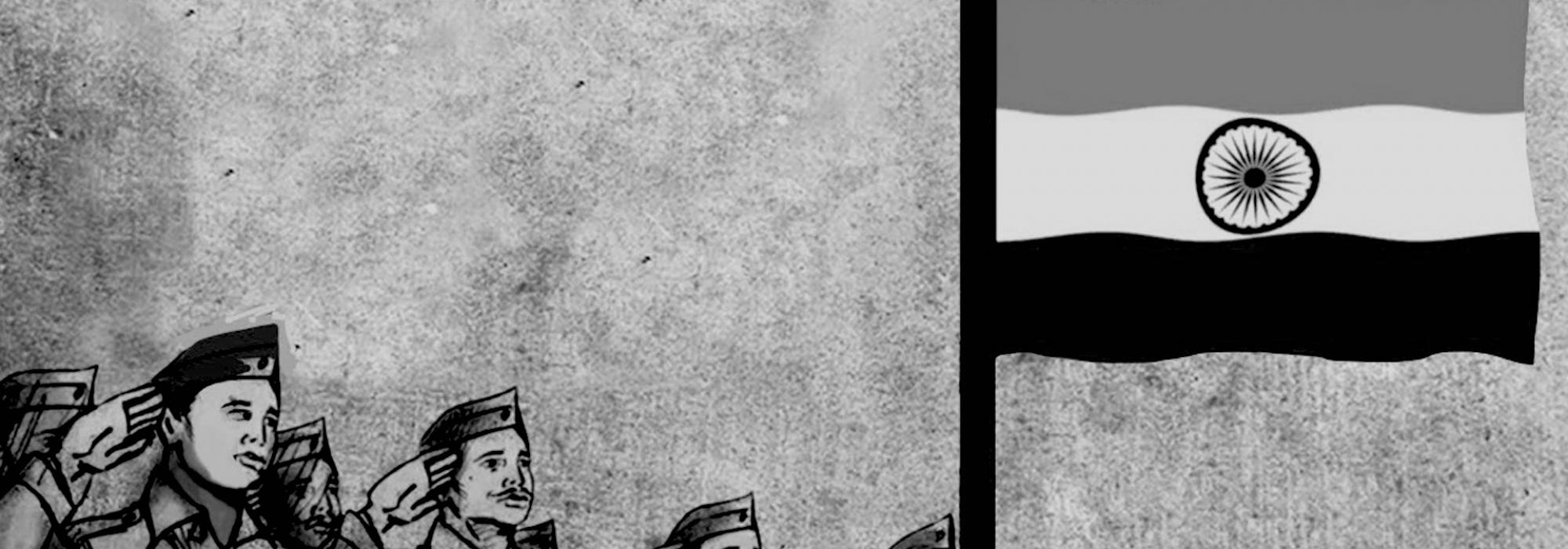Read Part 1 of this series:
At this juncture, we do not need to comment on the history of India since the invasion of Mohammedans until the present period. There does exist a few instances of consolation and bright spots in this long history. There are traces which show mutual harmony between Hindus and Muslims, exchange of knowledge and culture, and overall, an expansion of life-perspective between the two communities. However, despite all these gains, there still remained a huge lacuna in the minds of our countrymen. This lacuna hasn’t assumed a specific form. Akin to a form that we see at twilight, it has largely been semi-clear in the hearts of our people. That lacuna expressed itself as a revolt known as “Sepoy Mutiny” about 90 years ago, in 1857.
The Indian people did not want the rule of foreigners. However, when the Muslims invaded India, the same feeling of dislike existed. However, in that era, Hindu kings did not come forward to give their support to this revolutionary feeling. But when the British stepped into India, several royal dynasties were ready to offer their support to this public opposition to foreign rule. Thus, the coal that was burning within the hearts of our people for 950 years was ignited 90 years ago. This political aspect of the public that expressed itself in the physical world in 1857, eventually manifested itself throughout India in conferences, organisations, institutions and newspapers and was finally concentrated in the Congress institution in 1881. The festival that we are celebrating today is the festival of the victory of the Congress, or it is the coronation festival of democracy.
--- 4 ---
Three aspects emerge from this story:
- The whole of Bharatavarsha is one country. If there is freedom, it exists throughout the country. If it is lost, the whole country loses it. There is nothing like freedom for only a few regions and unfreedom for the rest.
- To attain this state of full independence, we need unity across regions and princely states. This unity has to be attained only by the people and not by kings and regional leaders because it is natural for feelings of hostility and jealousy among kings and regional leaders. However, it is not natural for common people to develop this level of hostility. The ordinary citizen finds it easy to cooperate with one another and develop a sense of harmonious unity.
- Independence is definitely not a mere figment of imagination. Its meaning is couched in several observable realities. These observable meanings must be realized in things equally applicable to all citizens: three square meals, decent clothes, a home to live in, a job or profession according to ability and qualification, and solutions for problems of old age and sickness. Thus, if this meaning has to translate into these experiences in real life, the people themselves need to take the responsibility for this translation.
There are three parts to this third and last aspect. In the first part, if our freedom should become fruitful, every man and woman of this country must think that this national responsibility is his/her personal responsibility and work accordingly. So far, the feeling among our people was this: Government was a God sitting in some faraway place, inaccessible to them. Now, they must erase this feeling and think along these lines: “Government is mine. It is within my reach. It is my duty to mould it properly.” Everyone must inculcate this public spirit and the feeling of personal responsibility must take deep roots. All narrow feelings of groupism and sectarianism must be pushed far away.
The second part – everybody must develop the attitude, and mindset for independent thinking. And this should only grow in the coming years. It is natural in a democracy for groups and orators to chant all kinds of slogans. However, the citizen who casts his/her vote to the leaders of such groups must ruthlessly examine their slogans and develop an independent stand based on truth.
The third part – public spirit and independent thinking must be fused with ethical fealty. A people that does not stand on the sturdy backbone of justice will not survive for long. The fortune that is gained by sacrificing ethics will not last long. The current state of the Western world is the greatest illustration of the fact that ill-gotten wealth leads to disaster and ruin. If our independence should become auspicious as well, the manner in which we exercise it must be rooted in Dharma.
Thus, when we examine the question of national independence, we see the onus of national responsibility. In this hour of great joy, we have placed upon our heads the burden of responsibility that is unprecedented throughout the history of this country.
In order to discharge it satisfactorily, every Indian—man, woman, and child—must always bear the following four points in mind:
- Public spirit
- Unity of people
- Independent thinking
- Ethical fealty
In order to implement this fourfold formula, let the Parameshwara who granted us independence also grant us the requisite mental toughness and purity of conscience.
Note: This is the second and concluding part of an English translation of D.V. Gundappa's Kannada essay titled Swatantrya Divasada Mahatvada Sanketa, part of the anthology of his essays titled, Rajakiya Prasangagalu - 1.
Concluded














































